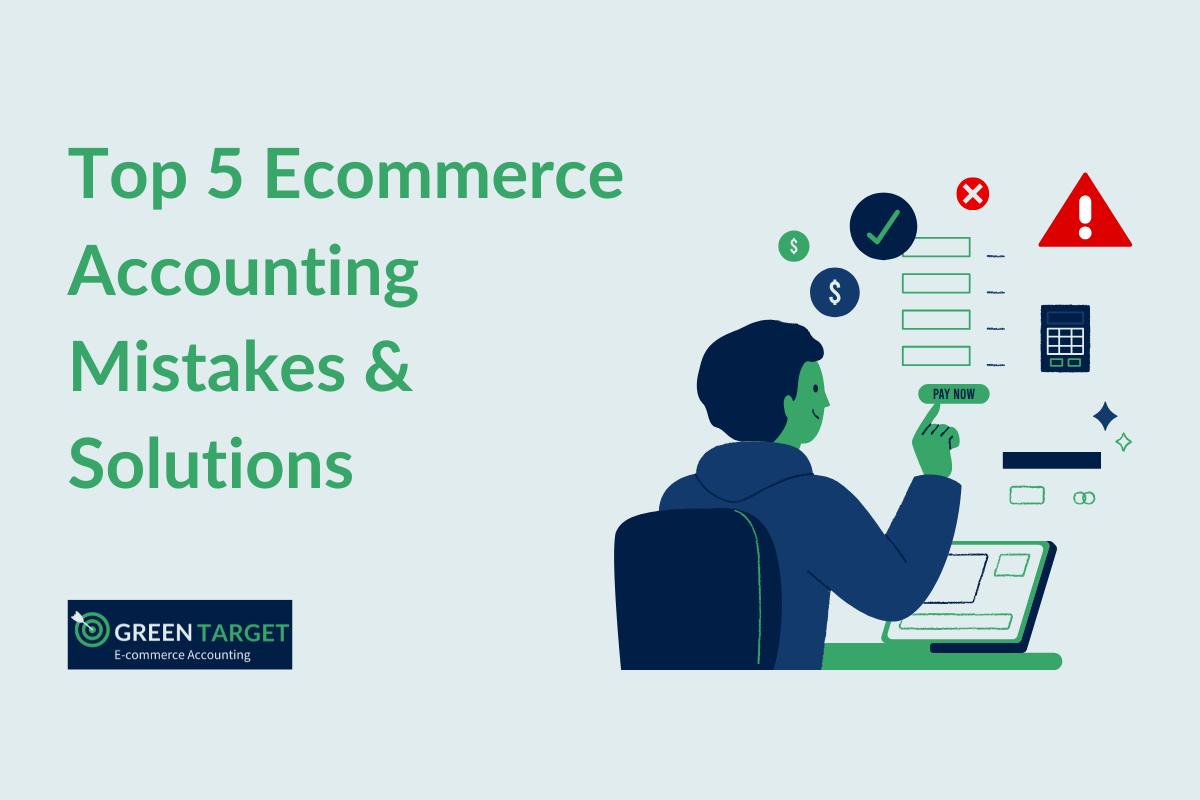Top 5 Ecommerce Accounting mistakes and solutions
Finally you made that record sales!
But at the end of the day
You feel like you are losing more and more money
You try to see where you are doing it wrong
But you just can’t figure it out!
I feel you, after working with more than 100 ecommerce sellers,
I have seen that there are unique problems ecommerce businesses have in their accounting
that causes ecommerce sellers to make mistakes and have inaccurate financials.
In this video, we will discuss five most common mistakes ecommerce sellers make and how you can solve them and avoid them from happening again.
First, Treating Amazon settlements, and Shopify payouts deposit as Income
This is a big flat mistake. Amazon fees, FBA fees, Shipment charges, receivables and reserves, are getting deducted from your Amazon settlement before hitting your bank account This is the same with Shopify, Walmart, Etsy, and eBay.
The SOLUTION:
Make a journal entry that breaks down Sales, Fees, Reserve and Carried balances, Loans, and other deductions then match it on the bank deposit.
Second, Directly charging purchases of inventory as Cost of Goods Sold
Another common mistake. As COGS is the biggest expense in your profit and loss, inaccurate amount will make the profit and loss inaccurate.
The SOLUTION:
Treat inventory purchases as Inventory Asset, and get the COGS amount by multiplying quantity sold per SKU with Unit cost.
Third, Payment gateway fees are not accounted for.
When you use different payment methods for your Shopify store, each has their own gateway fees getting deducted from your deposit before hitting your bank.
The SOLUTION:
Make sure to review each payment solutions you are using and check how they deduct the fees and get reports that will show the fees so you can account it on the bank deposit when recording it to QuickBooks Online.
Fourth, Syncing Sales Orders as Individual Invoices in QuickBooks Online
This is not flat out wrong – but instead, it’s not ideal. Yes, you can sync your orders into QuickBooks Online one by one and it will look great with all the details flowing in.
But in the long run, when you have too many sales coming through like literally thousands and thousands of orders every settlement or payout….it’s just too many for QuickBooks Online to handle. It will slow down the system and you too. It will be too time consuming for reconciliation that you may even give up on it later on.
The SOLUTION:
Use a 3rd party app to handle orders and fulfillment tracking. And use A2X to summarize each settlement and payout and match them to the bank deposit. This is highly scalable and the number of entries you will have in QuickBooks Online will not change even when your business is growing 2x, 5xs, or even 10 times.
Fifth, Trying to manage ecommerce inventory inside QuickBooks Online
While QuickBooks Online is amazing, with all new features being developed, it’s still not a good candidate to manage and track ecommerce inventory. Sure it can work for a few SKU and a few customer orders. But when used with Amazon, Shopify, or Walmart sales channels – it’s just not enough.
The SOLUTION:
Use a 3rd party app dedicated to inventory management. There are a lot of inventory management and fulfillment services that exists nowadays. And the choice will depend on your needs, the types of sales channels you are using, your business operations, and your budget.
And this concludes our video tips for today, sure there are other mistakes ecommerce sellers make that is not included here, and if you got one, tell us in the comments or let us know.
If you need more help contact us.
Subscribe for more Ecommerce Accounting tips!

